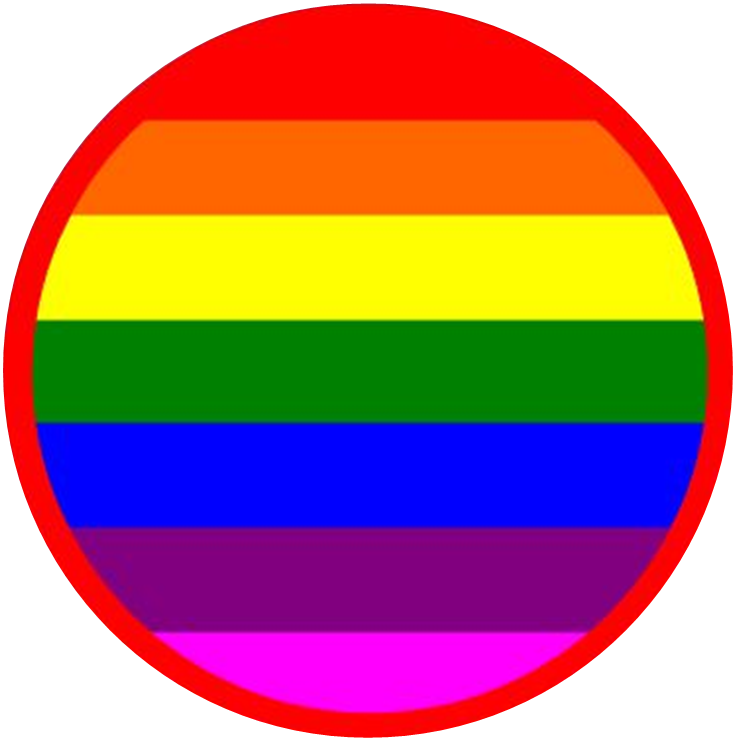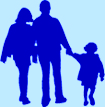© Copyright 2012 Red Circle Rainbow. All Rights Reserved.
Communication - Introduction to AAC
Communication
Communication is giving and receiving information. Without it, we cannot understand each other. When it comes to communicating with people who have expressive and receptive language challenges, we need to be creative and find methods to communicate everything from simple words to complex thoughts and concepts. Following is information about nonverbal communication systems, categorized under No Tech, Low Tech and High Tech.
PECS are a common first method used for teaching expressive communication. Pictures are exchanged, pointed to, or gazed at. Research has shown that many preschoolers using PECS also begin developing verbal speech. For detailed information on PECS, click on the link above. For an overview, click on this link to read the Wikipedia definition, which is more succinct, and easier to navigate than the Pyramid website.
We used PECS in the beginning, and I used hundreds of icons. Then I learned about and received training on the PODD system, which is like PECS, in that it uses pictures, but much easier to navigate and use.
The PODD system began to emerge in 1993, and was fully developed in its current state in 2007 by an Australian Speech Pathologist named Gayle Porter. The US representative is Linda Burkhart. PODD system software is distribution in the USA by Mayer-Johnson.
I wish I had known about this system earlier, as (in my opinion) it is superior to the PECS system for organization and patterned language development. The software is expensive at $300.95. HOWEVER, it is worth it. If you are up for purchasing, designing, binding and printing a PODD book for your child, then go for it! With a long history in graphic arts and printing, I was not intimidated by it. If you can't fathom doing this by yourself, there are local resources to help. The downside of having someone else produce it for you, is that you cannot make changes at will.
If you have the opportunity to take Linda Burkhart's PODD training seminar, you should do so. The training gives you all of the science behind the PODD book and it's organization.
But here's the main thing - the book is organized and intuitive. You navigate through the book repetitiously, using the same terms each time. The advantage over PECS, is that it is more than just labels, e.g. "Play", "Eat", "Water". So, unless your goal is to have your child speak like Tarzan, you will need a tool that teaches a language pattern, as this one does. It is used with an intelligent partner, so modeling is continuous, and the child does not have to navigate it independently. They can, if they are able to, but it is not required. Regardless of physical abilities, anyone can use it. It took me a couple of days to learn the navigation.
Signs and Gestures
"Clearly, gestures are an important component of successful adult communication. They also play an important role in the language development of young children. In fact, recent studies have shown that the use of purposeful gestures in pre-speech children can actually serve to increase functional language and vocabulary
(Capirci and Volterra, 2008)." -By Deborah Leutkenhoelter, M.A., CCC-SLP-Autism Quarterly
Signs and Gestures also allow communication without being able to hear, or speak. Although almost extinct, some remnants of controversy surrounding the use of signs and gestures and their effect on developing verbal speech still surface occasionally, confusing people about whether or not it is a good idea to teach their child signs and gestures. Signs and gestures are not only a good idea, they are an important part of language learning and comprehension. The anti-sign argument is that using signs will delay language development, "If they get to using their hands, they will be lazy and depend on their hands only, and won't bother trying to speak because it is so difficult." The reverse has been proven to be true.
A secondary theory regarding signs and gestures, is that a child will continue to use signs with zero comprehension about what the sign means and it will be too confusing for the child. Wow. Really?! So if I make the sign for drink, and produce a drink each time I make the sign, they won't get it? Select this link to read more about gestures and language: Gestures Role in speaking, learning and creating language.
Linda Hodgden covers this subject nicely in her book: Visual Strategies for Improving Communication, Practical Supports for Autism Spectrum Disorders
Augmentative Assistive Communication (AAC)
No Tech Communication
PODD continued...
Let's be clear here. This is not something you can hand to your child and expect them to learn how to use without support. You will need to commit to modeling every time you have something to say to them, or anyone else in the house. I liken it to sign language in the home. If there is a deaf person in the room, it is polite to sign regardless of whether the person you are talking to is deaf. See the below video for more information on the PODD system. Also, one of the advantages of the PODD book is that it is not electronic! I will address electronic communication devices next...
SLP PODD - Jessica, The Little Lighthouse
The opportunity to be truly immersed in an environment using aided language is rare. Children learning to use aided symbols frequently experience a significant discrepancy between the language used by others in their environment (speech) and the language they are expected to use. In these circumstances, children must problem solve how to use a language that they have rarely seen used to communicate. - 2009 PODD Introductory Workshop
Website Directory - Quick Links




